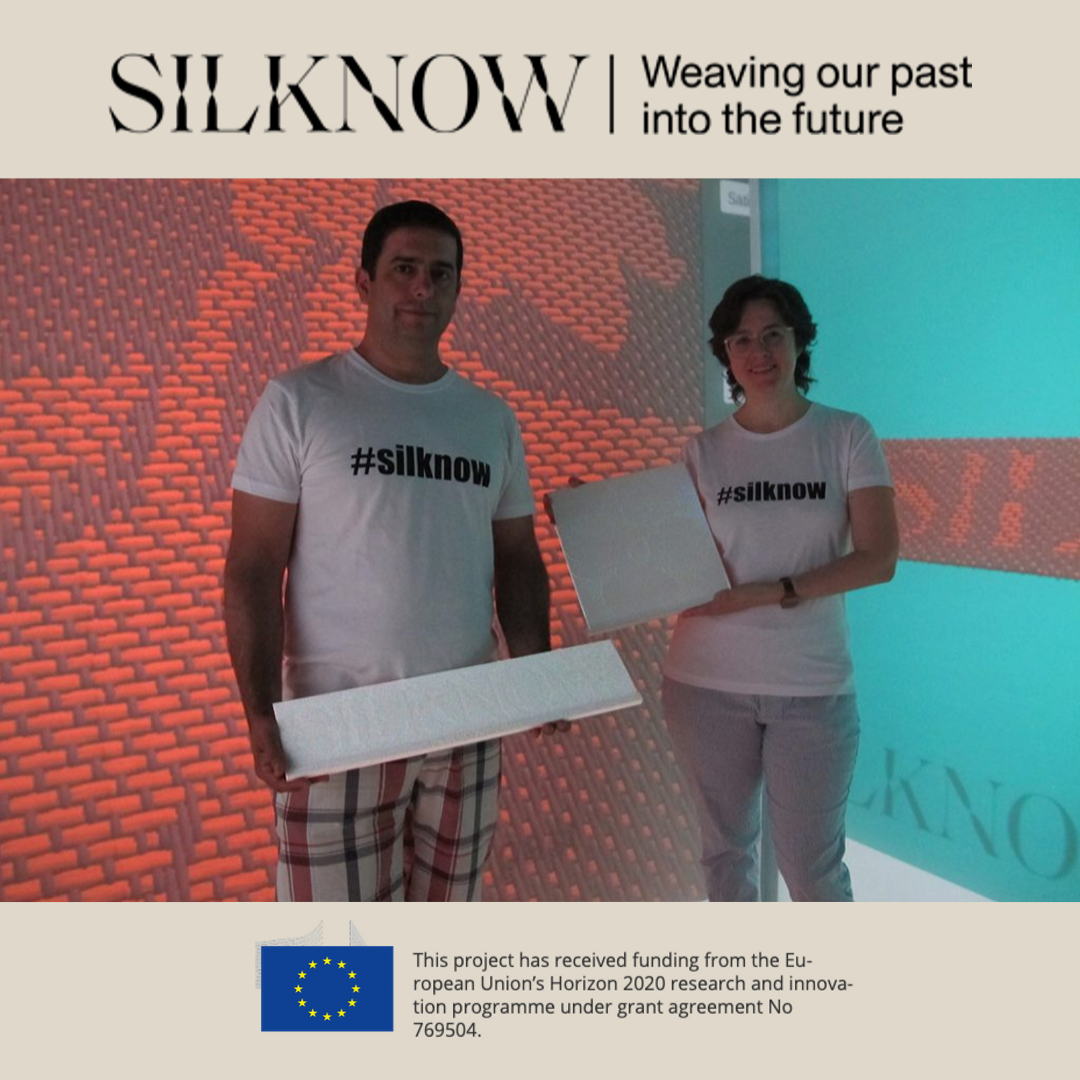
The Silknow research team develops the first version of the virtual loom.
The SILKNOW Project, funded through the Horizon2020 programme, in which the ARTEC group of the Institute on Robotics and Communication and Information Technologies is participating, has presented the first version of the virtual loom that imitates silk weaving techniques.
The aim of SILKNOW is to enhance the value of silk heritage in Europe, improving its understanding, conservation and dissemination. Thus, one of the central tools of this project is the Virtual Loom. This loom is capable of cloning ancient weaving techniques, generating a 3D model that replicates the internal structure of the fabrics. With the advice of experts in sewing techniques, the researchers have combined the information from the silk ligaments according to the technique and, on the other hand, the visual information, mainly from textile images.
In this first version of the virtual loom, the basic silk weaves have been modelled: taffeta, twill, satin and their derivatives. In addition, the damask technique has been implemented. In a second phase, more complex techniques will be included, such as the Valencian espolín.
The virtual loom is intended to reproduce the internal structure of ancient silk fabrics. However, the research and development team is working to make it possible to implement images of any weave, to apply the various weaving techniques. In this way, designers can visualise what the internal structure would look like for a particular design, with a choice of techniques, yarn types and colours.
In addition to this, the virtual loom is interesting for the creative industry and the education sector as it allows users to use different sewing techniques for a given image, choose between different thread colours and navigate through the virtual model, producing 3D printed models. This will make it possible to discover and enhance the artistic and artisanal complexity of silk. Therefore, the project contemplates activities related to education, creative and textile industries.
SILKNOW project
ARTEC group of the Institute on Robotics and Information and Communication Technologies, together with the Faculty of Art History, coordinates since last year the European project Silknow, which aims to improve the understanding, conservation and dissemination of silk heritage in Europe. Through state-of-the-art technology applied to the needs of museums, education, tourism and creative industry professionals, it aims to preserve the artistic heritage associated with silk.


















